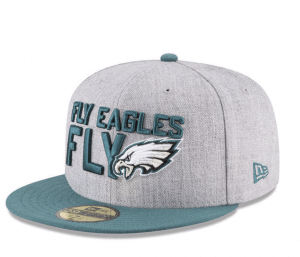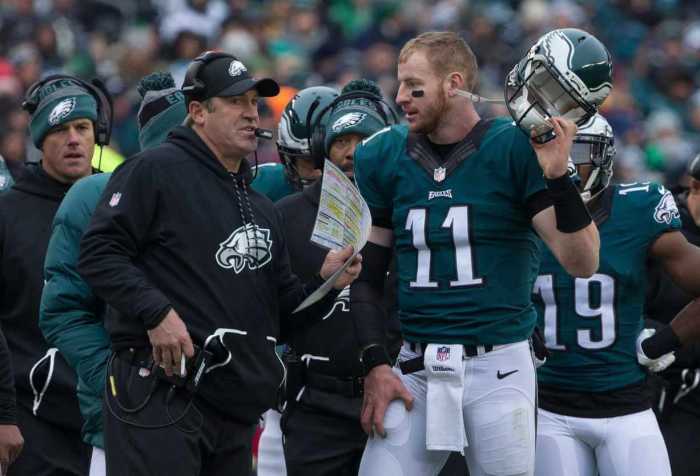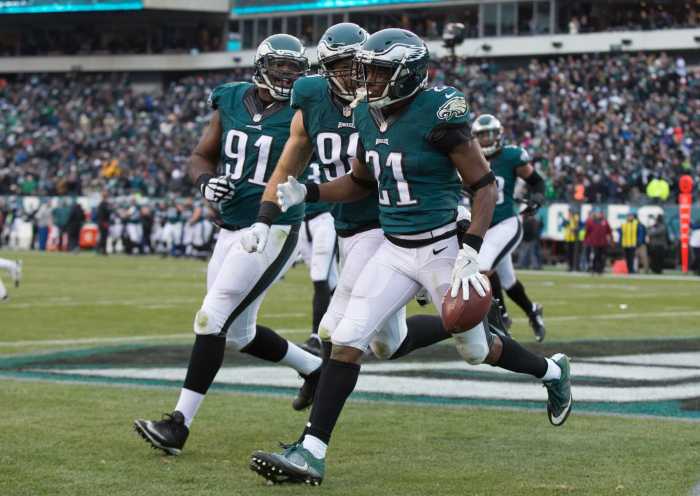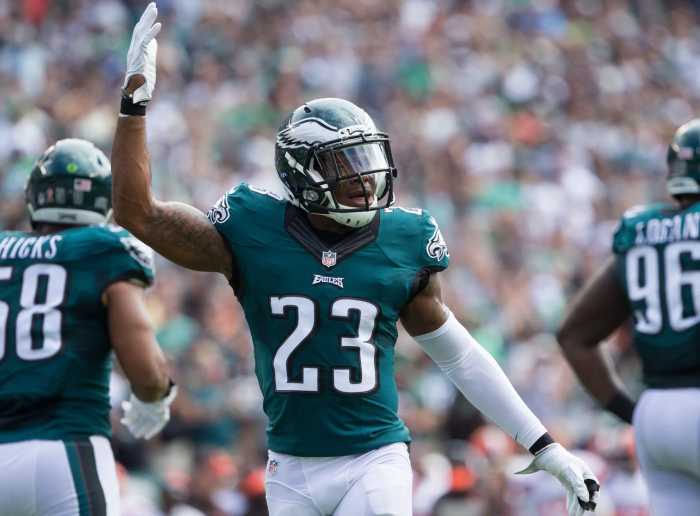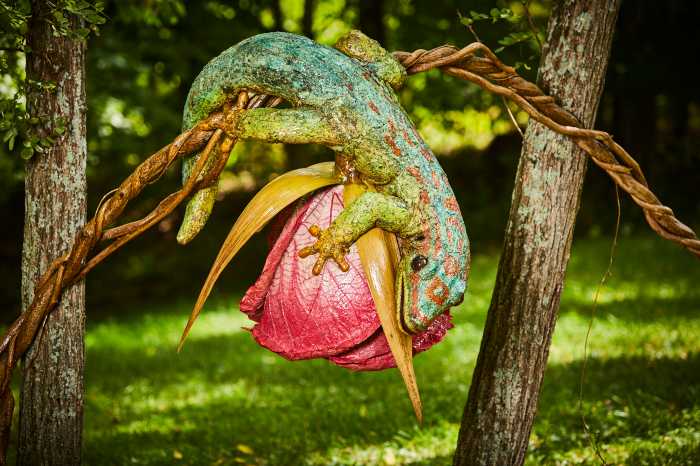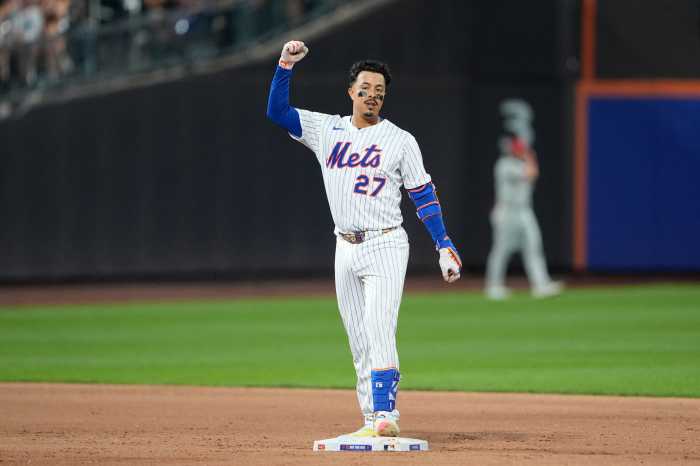Football has officially begun — sort of. For the sliver of remaining summer we will continue to analyse the Eagles’ NFC East opponents with true top and bottom line projections. The hope is that our position-by-position analysis will help make your own educated decisions why we’re better than our rivals. Today we’re looking at the big boys up front for the Washington Redskins offence. Let’s get started.
Offensive Line
In 2017, the Redskins offensive line struggled mightily, mostly due to serious injuries to their best lineman. All-Pro left tackle Trent Williams missed 6 games and was held back by nagging injuries all season. Williams injured himself in Week 3 and held off on getting surgery until late in the season. Brandon Scherff, the teams star right guard, suffered a grade 2 MCL sprain which affected him all season. Morgan Moses rolled both his ankles and continued to play. He was the only Washington lineman to play all 16 games. The team also periodically lost centre Spencer Long, now with the Jets, and their first man off the bench Ty Nsekhe. This forced the team to use 27 different combinations along the line throughout the year. For reference, two of the more solidified lines in the league: Atlanta used 6 combinations and Dallas used 8. Humble brag: your Philadelphia Eagles used 28 different combinations and still had the best O-line in the NFL. Below is a chart of each lineman’s snap count.
| Player | Position | Snaps | % |
| Morgan Moses | RT | 958 | 94.66% |
| Trent Williams | LT | 615 | 60.77% |
| Ty Nsekhe | T | 305 | 30.14% |
| TJ Clemmings | T | 142 | 14.03% |
| Brandon Scherff | RG | 867 | 85.67% |
| Shawn Lauvao | LG | 531 | 52.47% |
| Arie Kouandjio | LG | 424 | 41.90% |
| Tony Bergstrom | G | 193 | 19.07% |
| Tyler Catalina | G | 187 | 18.48% |
| Spencer Long | C | 397 | 39.23% |
| Chase Roullier | C | 457 | 45.16% |
On paper, if everyone is healthy, this is one of the better offensive lines in the league. Heading into 2018, Pro Football Focus has the Redskins starting the season as the 12th best line. However, last season they finished as the 21st graded offensive line according to PFF and Football Outsiders. In all honesty, that rank should probably be worse. The group allowed 181 pressures (20th) and 41 sacks (21st) on 606 pass snaps. 181 pressures are one more than the dismal NYG line allowed. The strength of this o-line has always been their pass blocking, but last season Football Outsiders ranked them the 24th rated group in pass protection. This was after finishing 12th in 2016. The Redskins finished the season with an adjusted sack rate of 7.7%. The league average was 6.7%. The problem with the Washington offensive line is that they are built like a bathtub, solid all around, but with a clear and obvious hole in the middle. This was especially noticeable in the run game, and in the group’s overall grades.
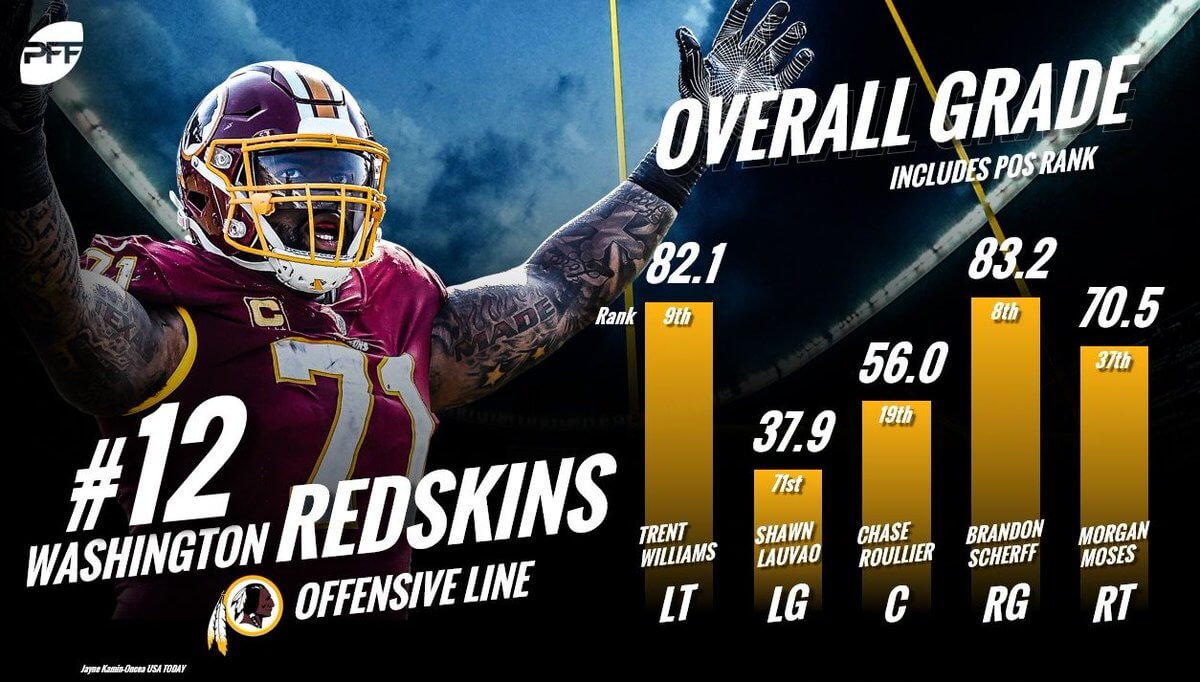
When running between Scherff and Moses, the Redskins were the 8th most efficient rushing attack. Then the drop-off begins. They were ranked 16th when running outside the tackles, 27th when running up the middle and 28th when running between the left guard and left tackle. While at the outset this is a dreadful result, it fits the skill set of new running back Derrius Guice quite nicely. The rookie specialises in off-tackle runs, and regularly bounces inside runs to the sideline. Obviously, the team would benefit from a more balanced rushing attack after targeting the middle of the field 9% less than the league average. The good news is this group is trending upwards.
Trent Williams is arguably the league’s top tackle when healthy. He has allowed just two sacks over the last two years and has greatly improved his run blocking since entering the league. In 10 games last season, he allowed only 17 pressures on 363 pass-blocking snaps, which was 8th best percentage in the league. His 82.1 overall grade was good for 9th in the league for tackles, along with an 80.3 pass blocking grade (19th) and an 83.2 run blocking grade (11th). Since 2015, of all lineman with 1,200 or more pass blocking snaps, he has allowed the fewest pressures – 52. Right behind him are Jason Peters and Lane Johnson. The issue with Williams is health. Every year since 2014, he has appeared in less games and longevity must be becoming a concern for the front office. If he is able to play a full season in 2018, he should again be a top 3 left tackle.
Left guard Shawn Lauvao was a liability last season. He was the weak link on a middling line. Back in his heyday, Lauvao was a pretty accomplished run blocker, but he has not played 16 games in a season since 2012 and injuries have taken their toll. He was never a talented pass blocker and has seemingly gotten worse. Even for a guard, he is slow and has lost strength over the years. He was the 71st ranked guard in 2017. He was so bad that the majority of the Washington media did not expect him to be back this season. Yet, for some reason, the Redskins offered him a one-year deal to stay in the nation’s capital for 2018. This move is kind of like reapplying a band-aid after it’s fallen off. To reiterate the bathtub analogy: Washington needs a plug (-and-play player), and all they have is a beaten up band-aid. Many fans are worried that this will prevent the team from looking elsewhere for solutions. For example, despite having incredible success drafting lineman in the past (see: 2010 1st round pick Trent Williams; 2014 3rd round picks Morgan Moses and Spencer Long and 2015 1st rounder Brandon Scherff), they did not draft a guard this year. They also did not pursue one in free agency. That means Jay Gruden is likely to turn to an in-house solution if Lauvao continues to under-perform.
With Spencer Long in the Big Apple, the Chase Roullier era has begun in Washington. Despite being thrown into the fire, Roullier fared well in his rookie season. In fact, he was the best rated pass blocker on the team according to PFF, registering a 98.4 pass blocking efficiency. This is the best rating for a rookie centre since 2006 when Nick Mangold was first entering the league. At 6’4” 317 lbs, he’s not an overly athletic centre and has short arms for the prototypical player at the position, but he is tough and competitive. His short arms will require him to be quicker out of the gate, which is not one of his strong suits and he will lose battles to quicker defensive tackles. However, he has a great anchor in pass protection and has the size and desire to be an accomplished run blocker. The Redskins are rightfully excited for his development.
**GET FREE SHIPPING ON OFFICIAL EAGLES GEAR AHEAD OF THE NEW SEASON**
Brandon Scherff is the epitome of technique at the guard position. He isn’t the most athletic or speedy guard but he’s wicked smart and knows how to use every inch of his 6’5” 319-pound frame. Last season, he was Pro Football Focus’ 11th rated offensive lineman, with an overall grade of 86.3. He is strong and has violent hands, which make him one of the best run blockers in the game. This is evidenced by the success the Redskins have had running behind him. He combines a heavy punch with a strong drive off the football and can straight up embarrass tackles, overwhelming them with pure power. Scherff is also known for his relentless effort and you’ll often see him downfield looking for blocks late in plays. All in all, he is a pretty reliable pass blocker, only allowing 18 pressures on 399 pass blocking snaps in 2017. He was held back by an MCL sprain last season. Without injuries, Scherff could challenge Cowboys’ Zack Martin for the top guard in the game.
After a fantastic 2016, many expected great things of Redskins’ right tackle Morgan Moses in 2017. Thus, the front office gave him a 5-year deal worth $42.5 million. While no slouch, he did not make the leap the team hoped he would. He was hampered by ankle injuries throughout last season, but still managed to play all 16 games. In his first two seasons in the league, Moses was a top 10 right tackle. 2016 was his coming out party, in which he finished the season with a 96.0 pass blocking efficiency. Five sacks and three QB hits allowed on 648 pass blocking snaps was good for 14th in the league. Off-season ankle surgery should help him regain his promising form from two seasons ago, but ankle injuries are a fickle phenomenon.
Arie Kouandjio played admirably replacing an under-performing Lauvao at left guard last season. His story is an impressive one. He was originally cut by the Redskins last off-season after being selected in the fourth round in 2015. He did a quick stint in Baltimore before being resigned by Washington a week before they faced off against the Seahawks. He then started that game, allowing no sacks. In fact, he did not allow a sack for the rest of the season. In his six starts he showed both inexperience and promise. Coaches are excited to see what he can do to build on his performance. I would not be surprised if he quickly becomes the starter beside Trent Williams on the left side come season start.
Swing tackle Ty Nsekhe will be the first man off the bench should injury strike. While a serviceable backup, the 32-year-old should not be considered a starter. In 305 snaps in 2017, he allowed three sacks and was flagged for two false starts. While he was held back by a core muscle injury last year, he won’t make a big leap in production at this point in his career.
The Redskins were hopeful that last year’s acquisition TJ Clemmings would make a functional depth player to add to the mix. Originally played at the tackle position, he was moved to guard after it was made clear that he could not hang with the league’s ends. The move did little to improve his performance. With a 36.6 rating, he was the only lineman on the roster to grade lower than Lauvao, according to Pro Football Focus. Washington’s wishful thinking was perhaps too optimistic following Clemmings’ 2016 showing. That season he allowed 58 pressures, which was the 3rd worst in the league, and nine sacks, the most in the NFL, on only 539 snaps.
Despite not spending a draft pick on a guard, the team did draft tackle Geron Christian out of Louisville. The former basketball player is a big athletic specimen. At 6’5” 298 lbs, he will need to add some weight, and with the talent Washington has along the line, I don’t foresee him playing all that much in his rookie season. However, he played at both tackle spots in college and his versatility may allow him some good reps off the bench. Above all else, Christian is an intriguing prospect for the future.
Best Case: The Redskins regain their position in the top 10 and push for a top 5 finish. With a year under his belt, Chase Roullier starts looking like an above average starter at centre. His push up the middle helps a vastly improved run game punish defences up the middle. Lauvao is swiftly supplanted by Kouandjio, who looks like a much better option at left guard. Trent Williams is able to play a full season, and the injury bug stays at arm’s reach. This line could be absolutely dominant if they are able to put all the pieces together.
Worst Case: I don’t see Washington finishing much worse than they did last season. Although, with a fully healthy cast, a ranking in the 20’s would be seen as a very disappointing season in the nation’s capital. The concern at the front of everyone’s mind is the liability at left guard. Constant pressure up the middle could make life very difficult for Alex Smith and rookie Derrius Guice. Dealing with a more mobile quarterback than they have in the past, the line will be asked to hold their blocks for longer this season. I believe the starters can do it; I worry about injuries. Trent Williams is their best lineman, but I think Brandon Scherff is the linchpin. With an already thin group at guard, they cannot afford for their best run blocker to be sidelined for any reason.
Mandatory Credit: Geoff Burke-USA TODAY Sports


